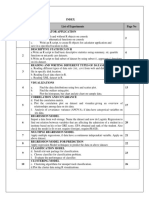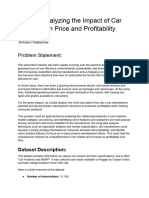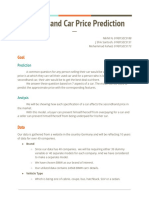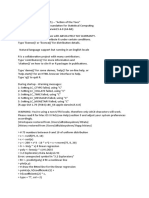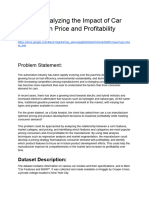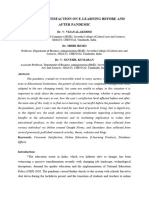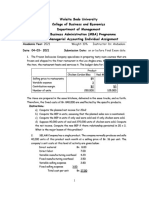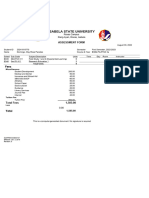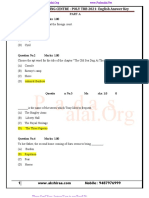0% found this document useful (0 votes)
33 views8 pagesStatistics Introduction
The document discusses the mtcars data set in R, which contains information on 32 cars. It describes that the data set has 32 observations and 11 variables, and provides definitions of the variables. Examples are given to find the dimensions, variable names, row names, and print, sort, and analyze values of variables.
Uploaded by
RukmaninambiCopyright
© © All Rights Reserved
We take content rights seriously. If you suspect this is your content, claim it here.
Available Formats
Download as DOCX, PDF, TXT or read online on Scribd
0% found this document useful (0 votes)
33 views8 pagesStatistics Introduction
The document discusses the mtcars data set in R, which contains information on 32 cars. It describes that the data set has 32 observations and 11 variables, and provides definitions of the variables. Examples are given to find the dimensions, variable names, row names, and print, sort, and analyze values of variables.
Uploaded by
RukmaninambiCopyright
© © All Rights Reserved
We take content rights seriously. If you suspect this is your content, claim it here.
Available Formats
Download as DOCX, PDF, TXT or read online on Scribd
/ 8







